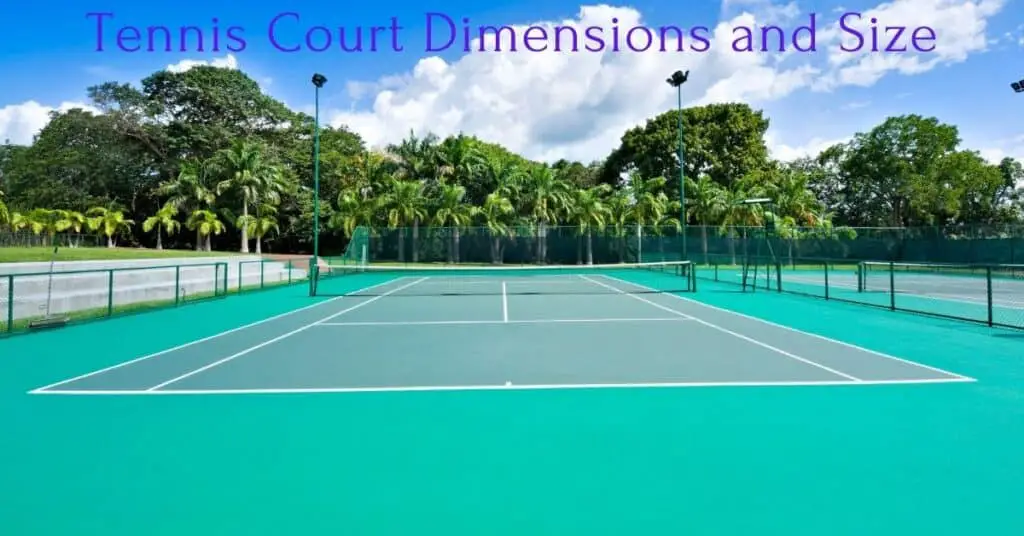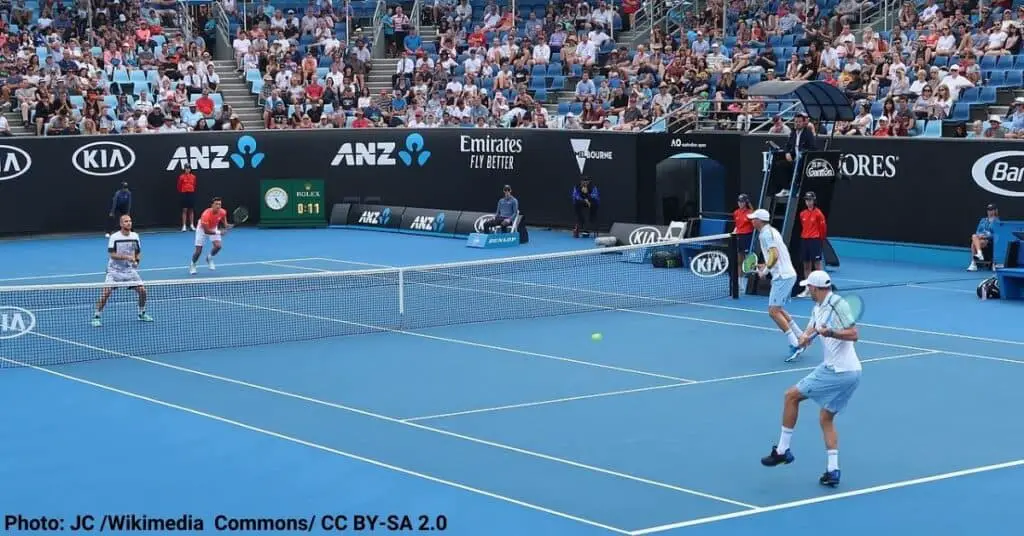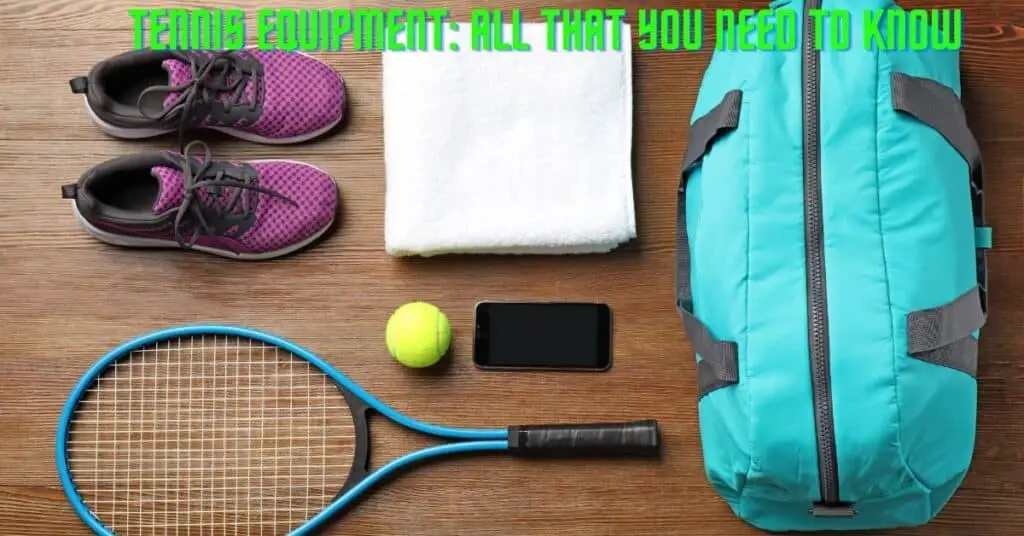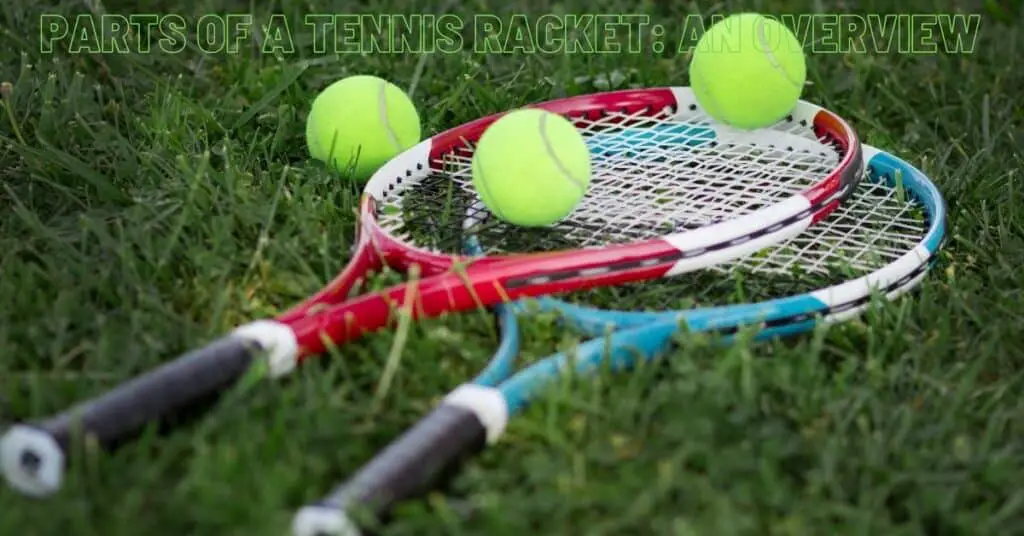The dimensions of a tennis court are fixed as per the rule of the International Tennis Federation (ITF). These dimensions include both the singles and doubles games. The dimensions are the same for the indoor and outdoor courts.
The standard dimensions of a tennis court for singles and doubles are 78 ft. x 27 ft. (23.77 m x 8.23 m) and 78 ft. x 36 ft. ( 23.77 m x 10.97 m) respectively. The height of the net should be 3 ft. (0.914 m) at the center and 3.5 ft. (1.07 m) at the net post.
Regulation Tennis Court Dimensions
A regulation tennis court is a rectangle in shape and is divided into equal parts along the length by a net attached to two net posts. There are mainly four types of courts with different characteristics like speed and bounce which affect the style of playing. These four types of courts are grass court, clay court, hard court, and carpet court.
Tennis Court Dimensions (Singles and Doubles)
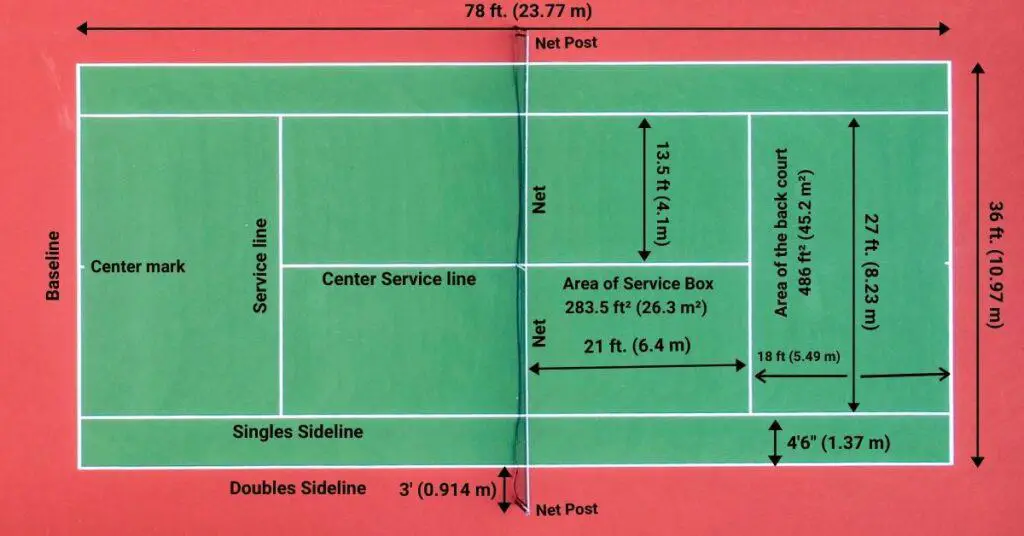
The following are the standard tennis court dimensions in feet and meters.
- Length: 78 ft (23.77 m)
- Width (Singles): 27 ft (8.23 m)
- Width (Doubles): 36 ft (10.97 m)
- Service box length: 21 ft (6.4 m)
- Service box width: 13.5 ft (4.1m)
- Area of the service box: 283.5 ft² (26.3 m²)
- Backcourt length: 18 ft (5.49 m)
- Backcourt width: 27 ft (8.23 m)
- Area of the backcourt: 486 ft² (45.2 m²)
- Doubles Alley: 39 ft (11.9 m) x 4.5 ft (1.37 m) = 175.5 ft² (16.3 m²)
- Total surface area (Singles): 2,106 ft² (195.65 m²)
- Total surface area (Doubles): 2,808 ft² (260.87 m²)
Tennis Net Height
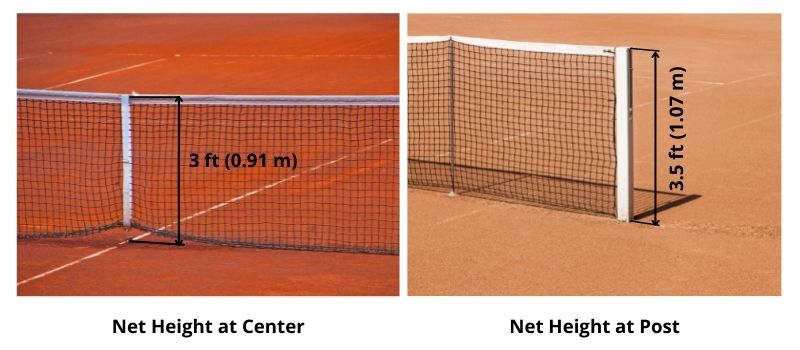
In tennis, a net is used to divide the court into two equal and separate areas. The net is fixed with net posts outside the doubles sideline to cover the whole area between two posts.
- Net height at the post: 3.5 ft (1.07 m)
- Net height at the center: 3 ft (0.91 m)
Minimum Overall Playing Surface Dimensions
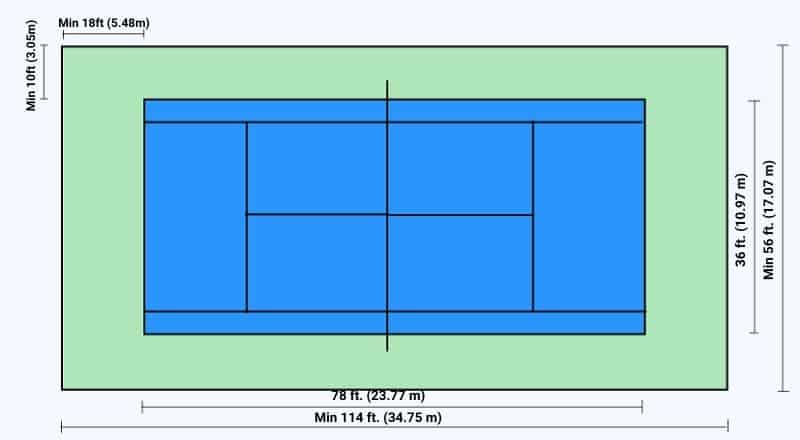
Apart from the main tennis court, you need space for run-off at the back of the court and also a run-off area at the side of the court to fence. In tournaments, there is also a need for space for the umpire, line judges, and ball boys/ girls. There may be other things also like a chair, camera, and other equipment. All these things vary from tournament to tournament, like the space needed for the grand slams may be larger than the challengers.
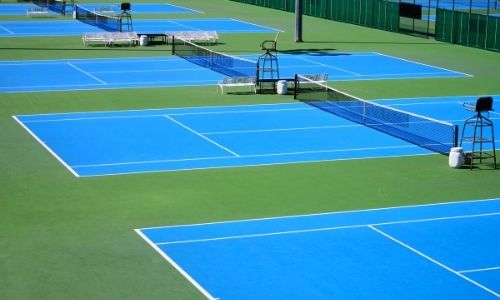
The below chart shows the overall playing area for various levels of competitions like club/ recreation (minimum space), international (minimum), and international (recommended).
| Court Dimensions | Recreation/ Club | International (Minimum) | International (Recommended) |
| Overall Area of the Playing Surface | 114.07 ft x 56 ft (34.77 m x 17.07 m) | 120.08 ft x 60 ft (36.6 m x 18.3 m) | 132 ft x 66 ft (40.23 m x 20.11 m) |
| Run-off at the back of the court | 18 ft (5.48 m) | 21 ft (6.4 m) | 27 ft (8.23 m) |
| Run-off from the side of the court to the fence | 10 ft (3.05 m) | 12 ft (3.66 m) | 15 ft (4.57 m) |
| The minimum distance between two courts (unfenced) | 12 ft (3.66 m) | 18 ft (5.48 m) | —– |
| Recommended distance between two courts (unfenced) | 14 ft (4.27 m) | —- | —– |
Dimensions of Court for 10 and Under Tennis Competition
There are also some smaller tennis courts for the juniors (Aged 10 and under 10). The International Tennis Federation has segmented these smaller courts into three groups.
- “Red” – For juniors aged up to 8 years
- “Orange” – For 8 to 10 years
- “Green” – Advanced players aged between 9 to 10 years
Juniors under the “Green” stage, are recommended to play on a standard full-size court. Smaller courts are recommended only for the “Red” and “Orange” stages.
| Stage | Court Length | Court Width | Net height at center |
| Red | (36 – 42) ft / (10.97 – 12.80) m | (14 – 20) ft / (4.27 – 6.10) m | (31.5’’ – 33’’) / (0.8 – 0.838) m |
| Orange | (58 – 60) ft / (17.68 – 18.29) m | (20 -27) ft / (6.10 – 8.23) m | (31.5’’ – 36’’) /(0.8 – 0.914) m |
Categorization of Court According to Speed
Recently ITF has launched a court pace certification program and according to this program, the courts have been segmented into five pace categories. Slower courts offer high bounce and less speed and for that players get more time to play shots. In reverse, faster lawn tennis courts produce high speed and low bounce and so the serve and volley strategy is more suitable.
| Court | Pace Rating | Speed |
| Category 1 | Slow | ≤ 29 |
| Category 2 | Medium-Slow | 30-34 |
| Category 3 | Medium | 35-39 |
| Category 4 | Medium-Fast | 40-44 |
| Category 5 | Fast | ≥ 45 |
Summary Chart (Tennis Court Size)
Tennis Court Measurements (Singles)
| Dimensions | Tennis Court Size in feet | Tennis Court Size in Meter |
| Length | 78 | 23.77 |
| Width | 27 | 8.23 |
| Diagonal Length | 82.5 | 25.15 |
| Area | 2106 ft² | 195.65 m² |
| Service Box Length | 21 | 6.4 |
| Service Box Width | 13.5 | 4.1 |
| Service Box Area | 283.5 ft² | 26.3 m² |
| Net Height at the Post | 3.5 | 1.1 |
| Net Height at the Center | 3 | 0.91 |
Tennis Court Measurements (Doubles)
Except for the following, all other dimensions in Doubles are the same as in Singles
| Dimensions | Tennis Court Size in feet | Tennis Court Size in Meter |
| Length | 78 | 23.77 |
| Width | 36 | 10.97 |
| Diagonal Length | 85.9 | 26.18 |
| Area | 2808 ft² | 260.87 m² |
FAQs
The standard dimensions of a tennis court for singles and doubles are 23.77 m x 8.23 m and 23.77 m x 10.97 m respectively.
The standard dimensions of a tennis court for singles and doubles are 78 feet x 27 feet and 78 feet x 36 feet respectively.
Yes, tennis courts for all the competitive tournament play and the club/ recreation are the same sizes. The only difference is the run-off area outside the marked area of the court. The overall playing area differs according to the levels of tournaments and play. For 10 and under tennis competitions, the recommended dimensions of courts are smaller than the regulation ones.
If you look back at the history of tennis, you will find that tennis was initially known as ‘Real Tennis’ in England. After the formation of the All England Club in 18 century, the gentlemen and ladies of Victorian England started playing the game on a grass court, and the name ‘Real Tennis’ turned into Lawn tennis. The difference between the two depends on the surface where the game is being played. When tennis is played on a grass court, it is called lawn tennis and for other surfaces like clay courts, and hard courts, people use to call it tennis.
It’s the hard court. It’s a medium-fast tennis court, not as fast as the grass court and also not as slow as the clay court. Moreover, it’s an all-round court with a nice bounce that suits most of the players.
The lines at the ends of the court are the baselines and the sides of the court are the sidelines.
It’s the narrow strips along the side of the court. It’s the extra space for the doubles which makes the court larger than the singles.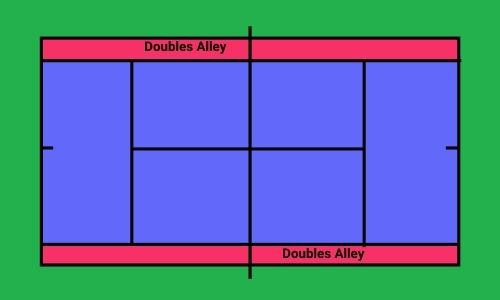
The length and width of the center mark are 10 cm (4”) and 5 cm (2”) respectively. The center mark divides the baseline into two equal parts. It is drawn inside the court parallel to the sidelines.
The baselines may be up to 10 cm (4”) wide, whereas the width of the other lines is between 2.5 cm – 5 cm (1” – 2”).
Related Topics:

